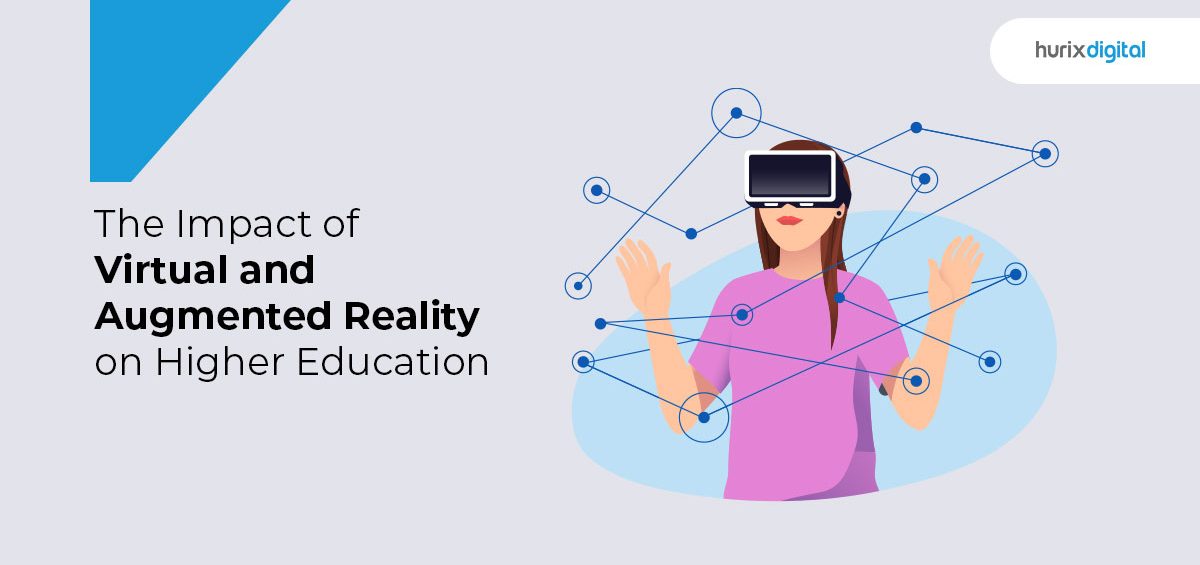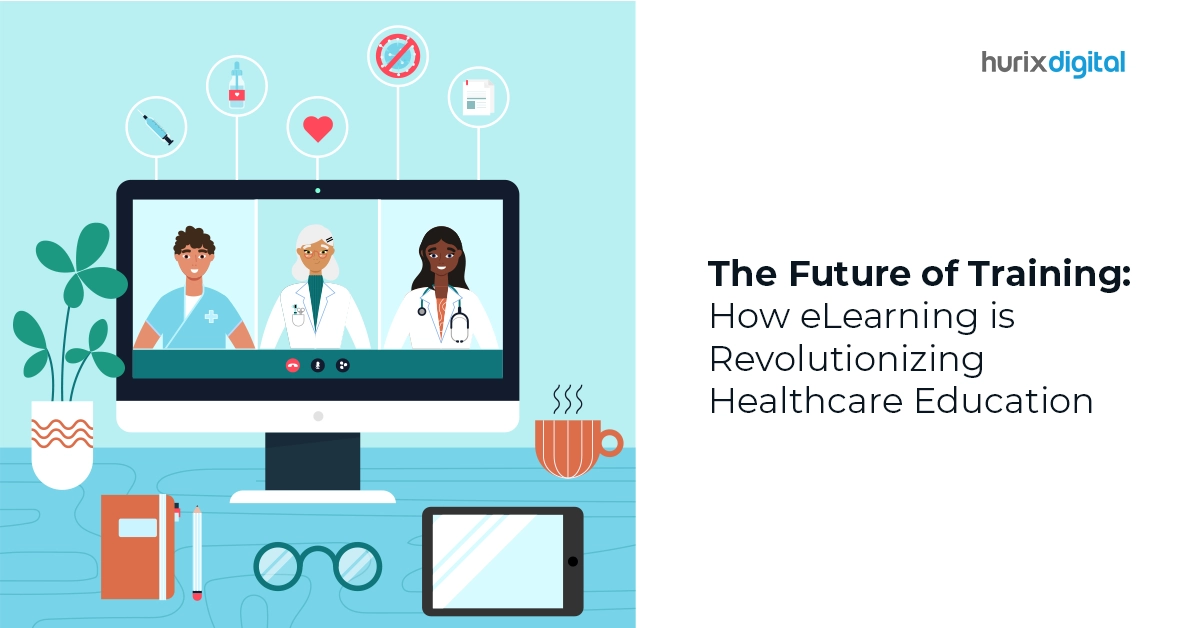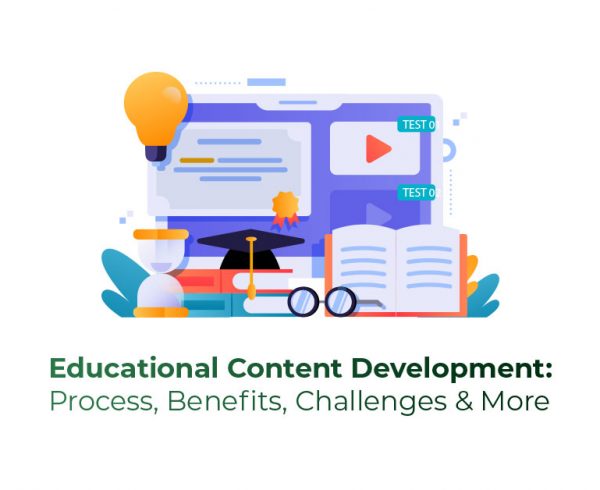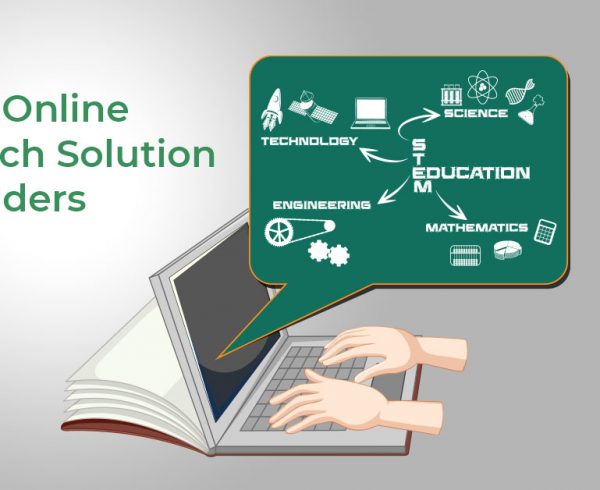Summary
This article discusses the benefits and impacts that AR and VR bring to higher education. It also discusses the various ways in which these immersive technologies can be used to improve the learning experience.
Table of Contents:
Introduction
Augmented reality (AR) and virtual reality (VR) are immersive technologies that equip users with the capability to experience digitally produced content in actual and virtual arenas.
Augmented reality overlays digital information such as sounds, videos, and graphics onto the real-world environment. Virtual reality constructs artificial environments that are completely digital and immersive.
These technologies are increasingly being used across industries, becoming a leading higher education solution and a workforce learning solution. According to a report, the global market for AR and VR technology is projected to grow at a strong CAGR of 55.7% until 2028.
These immersive technologies offer myriad possibilities for learning, particularly in the higher education industry.
What is the Impact of AR and VR on Higher Education?

AR and VR technologies have recently become more affordable and easier to use, allowing them to be successfully implemented in higher education.
The global extended reality (XR) market, including AR, VR, and mixed reality (MR), reached $29.26 billion in 2022 and is projected to rise to over $100 billion by 2026.
The various benefits and impacts that AR and VR bring to higher education are given below.
1. Improved Interactivity
Using AR and VR, instructors can convey information and course material more interactively, as compared to two-dimensional methods. Virtual reality in higher education can completely immerse students in the virtual scenario where they can interact with virtual objects and individuals in real-time.
This is particularly helpful for cases where learning requires an interaction with the physical environment. For example, students could be guided by digital overlays of instructions about complex tasks such as repairing a machine or performing a technical procedure.
Users can also learn from pre-recorded 360-degree visual experiences, which are less interactive but are still more experiential than two-dimensional visuals. This less immersive but more affordable method is useful for representation, such as depicting a visit to a historical site.
An AR device allows you to view actual surroundings with overlayed instructional text and applicable digital content projected on it. This enhances the educative experience, making it more stimulating. VR immerses learners in a completely virtual experience.
2. Improved Accessibility
AR and VR improve access to education by overcoming restrictions of cost or physical distance. With distance learning being the new normal, these technologies are all the more significant in higher education.
They have new implications for distance learning as compared to regular written and audio material; they allow distance learners to participate in the same lessons that in-person students would experience.
As an immersive higher education solution, these technologies enable educational experiences that would otherwise demand more resources, expenditure, and travel. Students can experience virtual field trips without incurring the cost of travel.
Learners can virtually visit a distant destination, carry out complex lab experiments, or even visit another planet or period in history.
Also Read: Learning For All: The Best Accessibility Solutions for Educational Institutions
3. Applied Learning
AR and VR enable applied and hands-on learning. By reproducing real-world conditions, they can help students practice and master skills through life-like scenarios.
Allowing learners to practice the skills in a controlled environment helps them become more confident in performing the task, making them better prepared to carry out the tasks in actual contexts.
4. A Safe Learning Environment
AR and VR allow students to practice and learn within a safe environment, free from the risks of the real world. It makes for more effective learning. Students can make mistakes without facing the costs and also practice making choices with different outcomes.
For instance, a complex medical procedure can be performed in the security of a virtual environment without the risks and costs that would ensue from errors in an actual medical procedure.
5. Better Knowledge Retention
AR and VR technologies involve and engage learners, making them more interested in learning. Through experiential learning, they gain a deeper understanding of the educational material than lectures, presentations, or readings.
AR and VR make learning more effective and absorbing by helping students form coherent mental visual images and promoting full concentration. They also boost students’ interest in the material by exposing them to a diversity of stimuli. This leads to better knowledge retention.
6. Better Collaboration
AR and VR applications allow multiple students to simultaneously participate in a common learning process. It supports group learning as well as learner engagement and participation. It also helps students develop vital skills like teamwork.
Since AR content is digital, it is easy to share. A collaborative learning environment increases student motivation because it encourages active learning.
AR and VR solutions facilitate collaborative research and interactive learning. They allow students and instructors to interact face-to-face in real-time, even if they are in different locations.
Immersive solutions can help mitigate some of the concerns that arise with online learning and digital communications, such as the quality of learning and interaction.
7. Better Learning Outcomes
AR and VR tools can lead to better learning impact in terms of targeted outcomes.
Immersive learning solutions reduce cognitive load, boost learner engagement, and strengthen memory. They can also allow for instant feedback during the learning process.
8. Individualized Learning
Using virtual and augmented reality technology in higher education allows educators to meet unique individual learning preferences and requirements.
Multiple learning pathways, scenarios, and branching options allow learners to choose the most suitable way of learning based on their personal needs. They enable personalized educative approaches that can cater to diverse learning styles, paces, and abilities.
Also Read: Five emerging technologies in higher education learning
Conclusion
AR and VR have much to offer in the rapidly developing arena of education technology because of the immersive learning experiences they create. Additionally, they enable sharing of information in novel and absorbing ways and also increase access to education.
Virtual and augmented reality tools have transformed the higher education space and brought several positive impacts as a higher education solution. These include improved interactivity and accessibility, applied learning in a safe learning environment, better collaboration, and improved learning outcomes.
Hurix Digital offers e-learning solutions in the higher education arena. Our team applies instructional design models and theories to diverse client requirements. We support educational institutions to create and deliver competency-based education. We also provide educational content development solutions for higher education and offer business learning consulting.
Connect with Hurix Digital’s experts to know more!











